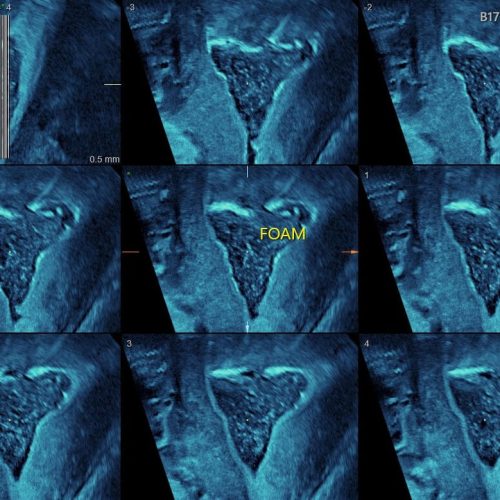What is a tubal patency?
A tubal patency test examines the fallopian tubes for any blockages which may result in a woman being unable to conceive a pregnancy naturally. The test has been designed specifically to assess the tubes since they are not visible in a routine ultrasound examination.
What is a fallopian tube?
In a typical female pelvis, fallopian tubes arise from the top of the uterus on both the right and left sides. These tubes act as a pathway between the ovaries and the uterus. The role of the fallopian tube is to transport sperm and eggs towards one another so fertilisation can occur within the tube and then to transfer the fertilised egg back into the uterus for implantation.
In some women, both fallopian tubes may be blocked. This will result in the sperm and egg being unable to meet in order to fertilize. In some circumstances, one tube is blocked whilst the other is clear. Only one open tube is required to naturally conceived a pregnancy.
What causes the tubes to block?
A blockage in the fallopian tube may be caused by endometriosis, pelvic inflammatory disease, sexually transmitted infections, scarring from previous surgery or other severe pelvic infections. The tubes may also block through the presence of a very large fibroid. In many circumstances, the cause of the blockage is unknown.
How is the test performed?
An internal (transvaginal) ultrasound is performed initially. This will assess the appearance and health of the uterus, ovaries and pelvis. Afterwards the gynaecologist will use a speculum and introduce a very thin, soft plastic tube (catheter) through the cervix and into the uterus. Once the catheter is in position, a solution is injected into the uterus and with the aid of ultrasound, the fallopian tubes are examined to see if the solution is flowing through them freely.
When can I book a tubal patency?
A tubal patency test can only be performed on a woman who is not pregnant. The test needs to be conducted after the menstrual period but prior to ovulation to ensure no pregnancy has just occurred. In a normal 28-day cycle, the test would be booked from day 6 – day 11. You are required to abstain from intercourse from day 1 of the period up until the day of your test.
Since the test is performed through the vagina, it may not be appropriate for a patient who has not previously been sexually active. The appropriateness of the test should be discussed with the referring doctor if there are any concerns.
How long do the results take?
The gynaecologist will talk you through the procedure fully and will inform you of the results at the time of test. A written report will also be sent to your referring doctor.
On the day
You can eat and drink as normal prior to the test. You will be required to have an empty bladder for the test. Please ensure that your referral has been received by the clinic. A fee is payable on the day with a portion claimable from Medicare. You are welcome to bring one support person with you.
What to expect during the test
You will be kept informed throughout the test by the doctor. Some crampy pain is sometimes experienced. Patients may choose to take pain relief prior to the test such as Neurofen or Panadol however this is personal choice.
Lipiodol Flush
Lipiodol is an iodised oil which has been found to increase the occurrence of naturally conceived pregnancies after injection into the fallopian tubes. It is an additional flush that can be performed at the end of your test providing at least one fallopian tube is clear.
Your referral MUST state clearly that your referring doctor is requesting a tubal patency test WITH Lipiodol. You must also ensure that you are booked for tubal patency test WITH Lipiodol since not every clinic offers this flush. There is an additional fee to purchase the Lipiodol.
Lipiodol is not suitable for patients with an allergy to iodine.
What to expect afterwards
After the test some crampy pain similar to period pain is normal. Some women choose to take pain relief medication as they would to treat period pain. Any pain should subside within 1-2 days. Some patients experience spotting of red blood after the test and/or a watery discharge. This is not a concern. You are able to drive and resume daily activities after the test. Patients can discuss with their referring doctor when they can commence trying to conceive once more.
Checklist
- Valid Referral
- Abstain from intercourse
- Day 6 – day 11 of cycle
- Pain relief prior
Tubal Patency Study / Lipiodol Flush – Patient Information Sheet






